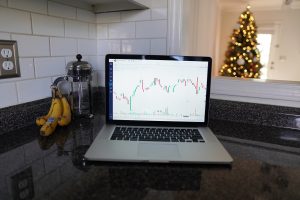
Risk Management in Forex Trading: A Comprehensive Guide
Forex trading, also known as foreign exchange trading, is the process of buying and selling currencies in the global foreign exchange market. It's a dynamic and potentially lucrative endeavor, but it comes with its fair share of risks. That's where risk management plays a crucial role. In this comprehensive guide, we'll explore the importance of risk management in forex trading and provide you with essential strategies to protect your capital.
Understanding Forex Trading
Forex trading involves the exchange of one currency for another with the aim of making a profit. Traders speculate on the price movements of currency pairs, such as EUR/USD or GBP/JPY. The forex market operates 24 hours a day, five days a week, making it one of the most liquid and accessible financial markets in the world.
The Importance of Risk Management
Risk is inherent in any form of trading, and forex is no exception. Without proper risk management, traders expose themselves to significant financial losses. Here's why risk management is paramount:
Preservation of Capital
The primary goal of risk management is to protect your trading capital. By setting strict limits on how much you're willing to risk on each trade, you ensure that a single losing trade doesn't wipe out your entire account. This preservation of capital allows you to continue trading and take advantage of profitable opportunities in the long run.
Emotion Control
Forex markets can be highly volatile, and emotional reactions to gains and losses are common. Effective risk management strategies help traders maintain discipline and avoid impulsive decisions driven by fear or greed. When you have a predefined risk management plan, you're less likely to deviate from your strategy in the heat of the moment.
Consistent Performance
Consistency is key in forex trading. With proper risk management, you aim to achieve a steady and sustainable rate of return over time. This approach is more likely to lead to long-term success than seeking high-risk, high-reward trades that can result in significant losses.
Key Risk Management Strategies
Now that we understand why risk management is vital, let's delve into some key strategies:
1. Position Sizing
Position sizing involves determining the amount of capital you're willing to risk on a single trade. A common rule of thumb is to risk no more than 1-2% of your trading capital on any given trade. This ensures that even a series of losing trades won't devastate your account.
2. Stop-Loss Orders
A stop-loss order is an automatic instruction to exit a trade when it reaches a certain price level. This tool allows you to limit potential losses by defining in advance the maximum amount you're willing to lose on a trade.
3. Take-Profit Orders
Take-profit orders work in the opposite way of stop-loss orders. They automatically close a trade when it reaches a predetermined profit level. Setting take-profit orders helps you lock in gains and avoid the temptation to hold onto a winning position for too long.
4. Diversification
Don't put all your eggs in one basket. Diversifying your forex portfolio across different currency pairs can help spread risk. A losing trade in one pair may be offset by a winning trade in another, reducing overall portfolio risk.
Risk Management Tools and Techniques
Effective risk management in forex trading involves the use of various tools and techniques to mitigate potential losses. Let's explore some of these strategies in more detail:
5. Risk-Reward Ratio
The risk-reward ratio is a fundamental concept in risk management. It refers to the relationship between the potential profit and the potential loss on a trade. A common guideline is to aim for a risk-reward ratio of at least 1:2. This means that for every dollar you're willing to risk (your stop-loss), you should aim to make at least two dollars in profit (your take-profit). A favorable risk-reward ratio can help ensure that your winning trades outweigh your losing ones, leading to overall profitability.
6. Trailing Stop-Loss Orders
A trailing stop-loss order is a dynamic version of the traditional stop-loss order. It adjusts automatically as the trade moves in your favor. If the price moves in the direction you anticipate, the trailing stop moves along with it, locking in profits while still protecting against potential reversals. Trailing stop-loss orders are particularly useful when you want to maximize gains during strong trends.
7. Risk Percentage Adjustments
As your trading capital grows or shrinks, it's essential to adjust the percentage of capital you're willing to risk on each trade. When your account size increases, you can afford to risk a slightly higher percentage on each trade, which can lead to increased profits. Conversely, if your account balance decreases, reducing your risk percentage can help protect your remaining capital.
8. Correlation Analysis
Correlation analysis involves assessing the relationships between different currency pairs. Some currency pairs have a strong positive or negative correlation, meaning they tend to move in the same or opposite directions. By understanding these correlations, you can avoid overexposure to similar trades and reduce the risk of your entire portfolio being affected by a single market event.
Continuous Monitoring and Adaptation
Risk management in forex trading is not a one-time task. It's an ongoing process that requires continuous monitoring and adaptation to changing market conditions. Here are some key practices to keep in mind:
Regularly Review and Adjust Your Risk Management Plan
As your experience and trading goals evolve, your risk management plan should evolve with them. Periodically review your strategies and make necessary adjustments to ensure they align with your current objectives and market conditions.
Stay Informed About Market News
Market news and economic events can have a significant impact on currency prices. Stay informed about upcoming events, such as central bank announcements, economic reports, and geopolitical developments. Consider reducing your risk exposure or avoiding trading during times of heightened uncertainty.
Keep Emotions in Check
Emotional trading is a common pitfall in forex. Fear and greed can lead to impulsive decisions that undermine your risk management efforts. Stick to your predetermined risk parameters and avoid making trades based on emotional reactions to market fluctuations.
Conclusion
Risk management is the bedrock of successful forex trading. By implementing robust risk management strategies, using tools like stop-loss and take-profit orders, and continuously adapting to changing market conditions, you can protect your capital and increase your chances of achieving consistent profitability.
Remember that forex trading is inherently risky, and there are no guarantees of profit. It's crucial to approach trading with a realistic mindset, invest time in learning, and practice with a demo account before risking real capital. Seeking guidance from experienced traders and financial professionals can also provide valuable insights as you navigate the complex world of forex trading.
In conclusion, mastering risk management is not just a crucial aspect of forex trading; it's the foundation upon which successful trading careers are built. With discipline, patience, and a well-defined risk management plan, you can navigate the forex markets with confidence and resilience.
Latest Posts


Leverage in Forex Trading: A Double-Edged Sword

Deciphering Market Trends: Strategies for Successful Stock Market Investing

Stock Market Trends to Watch: Predicting Market Movements

Risk Management in Forex Trading: A Comprehensive Guide
